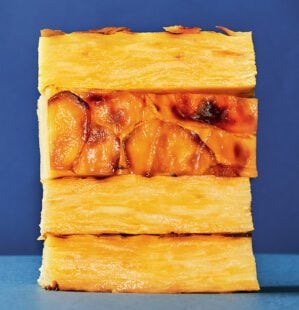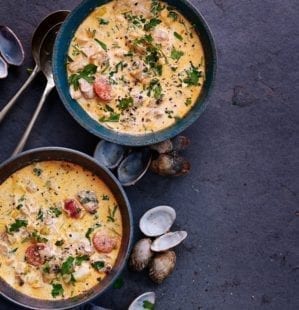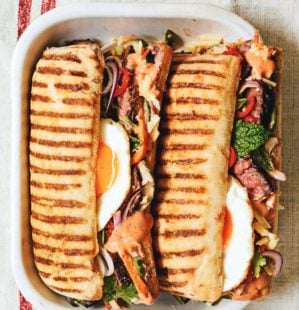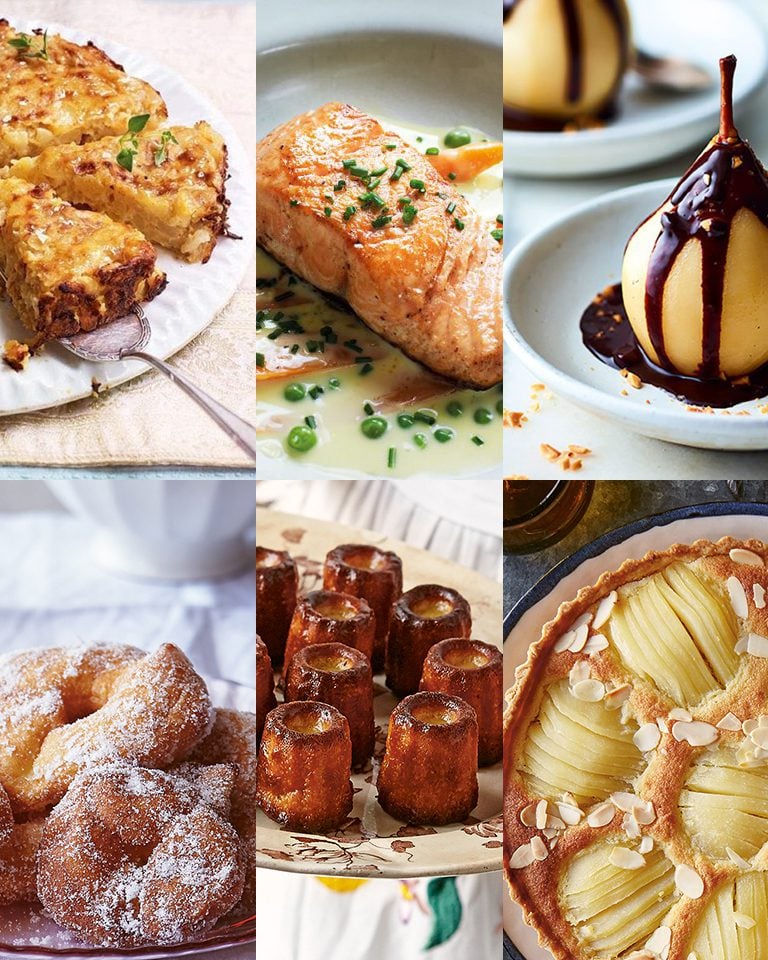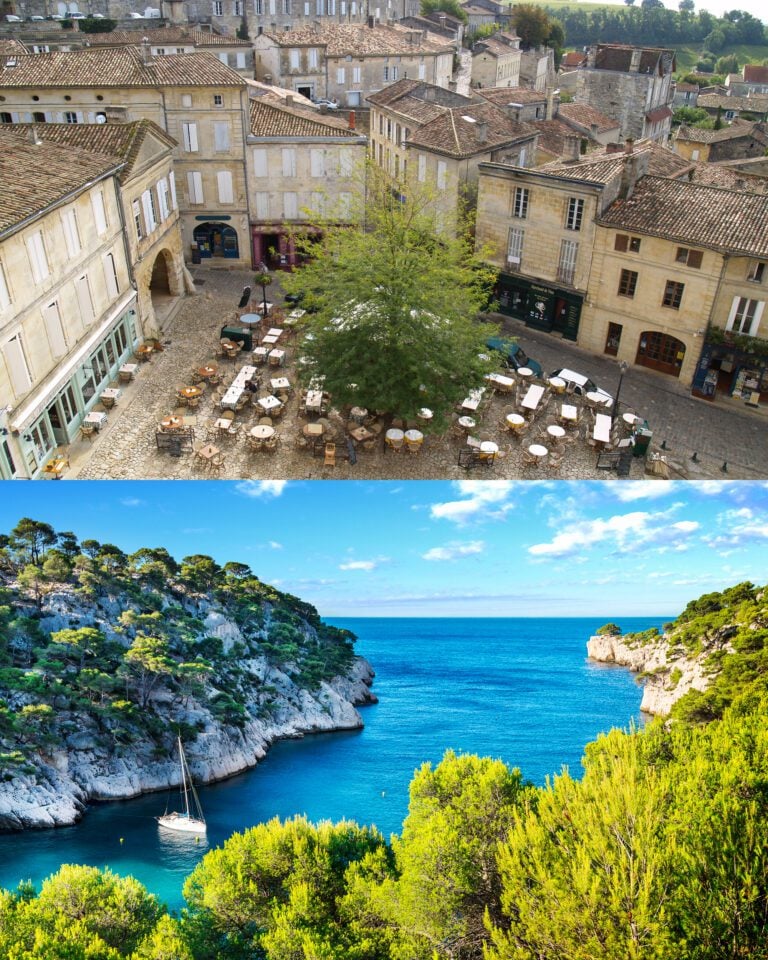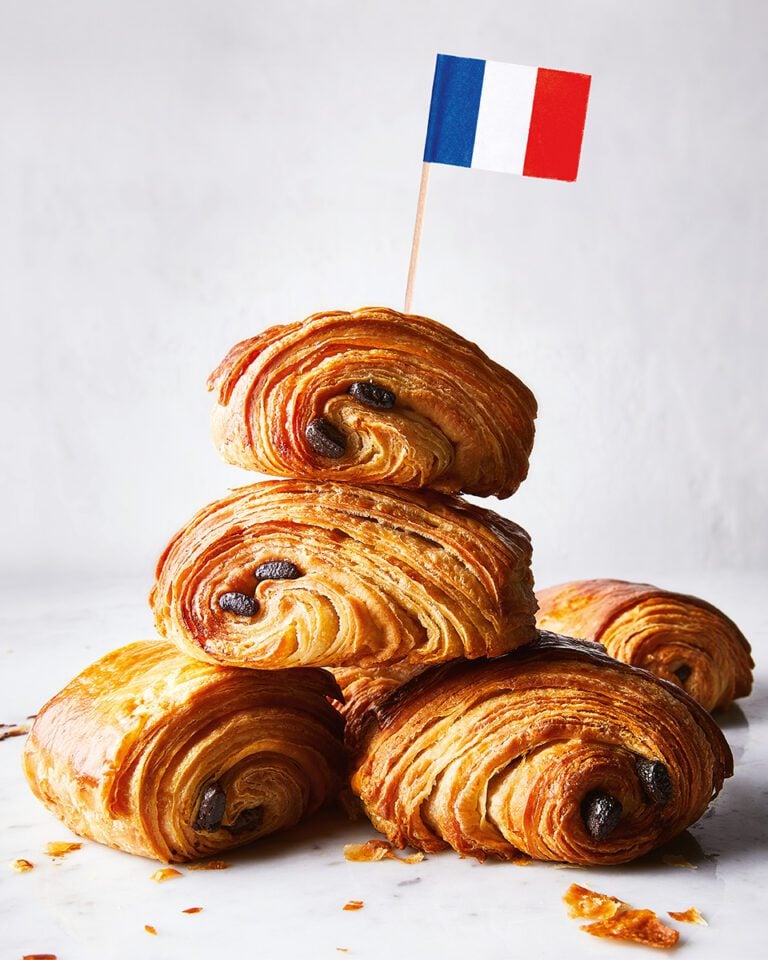Who decided French food was best?
It’s a long time since going to a high-end restaurant automatically meant the menu would be in French. Food has moved on. Yet the influence of French cuisine persists: in chef training, in Michelin kitchens, in the names of dishes we love to cook and eat. Historian and writer Annie Gray looks at the origins of this influence – and how French cuisine became so far-reaching…
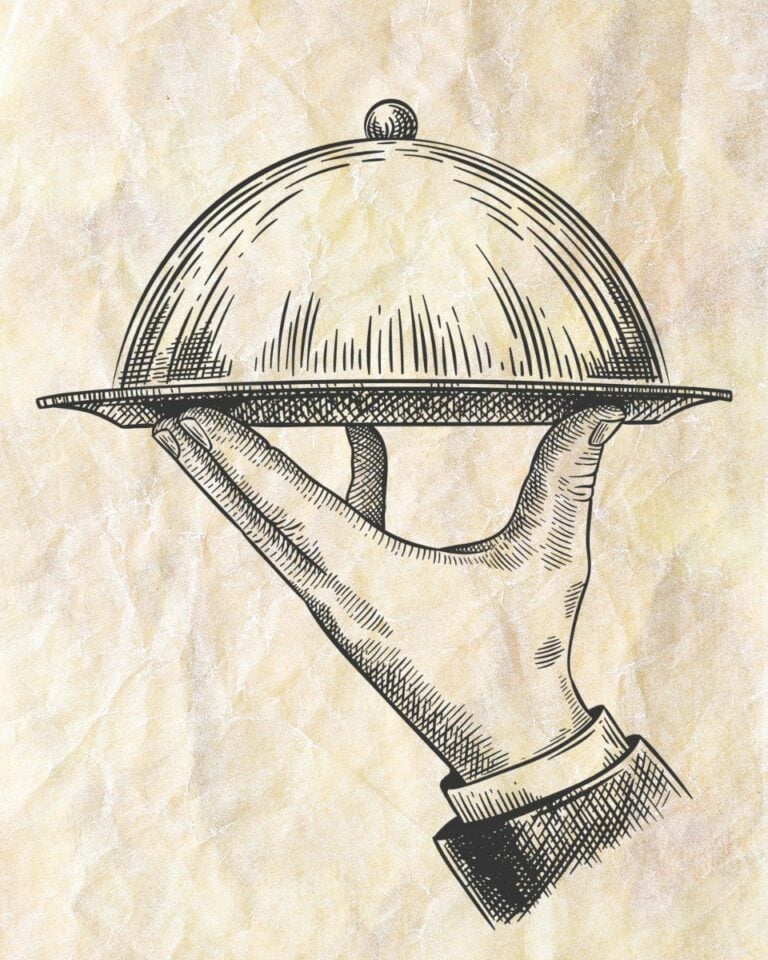
French food vs English fare
There’s a long history of tension between what the British have dismissed as overly fussy French food versus plain English fare. We’ve had a love-hate relationship with our nearest neighbour for over a thousand years. And during that time, French food conquered not just Britain but quite a lot of the world. But who decided French food was best? Essentially, the French did, then persuaded everyone else to agree.
The French takeover began for Britain in 1066 when the Normans invaded, bringing with them the culinary words we still use for cow (boeuf/beef), sheep (mouton/mutton) and pig (porc/pork). They even ferried over Cistercian monks to fix the cheese culture. The idea of French culinary supremacy was thus embedded in English gastronomy from the start. French became the court language and for a long time large parts of France were ruled from London. For the upper classes a pan-European cuisine developed, with French and Italian influences to the fore. For about 500 years the type of cuisine you ate was defined more by class than country.
By the late 16th century, this was changing. National identities were forming, including culinary ones, and with them came national expansion. Again, French colonisers took French food with them, importing it into the Caribbean and North America. Two hundred years and a few wars later the French were in North Africa, India, the East Indies and parts of East Asia. The sharp-fruity sauces with meat that characterise Québécois cuisine, and the étouffées of New Orleans are direct heritors of 18th-century French food, as are the pavement cafés and croissants of Laos and Vietnam. But French colonisation is only a small part of the story. The British occupied large swathes of the world for a long time, yet nobody holds up British cuisine as the best.
This was also an age of cultural expansion. Thanks to the palace at Versailles, the arts had flourished in France. By the 18th-century the country was renowned for its sophistication and artistry. Food was a way for the French court to peddle soft power, influencing the rest of Europe through an exchange of personnel and ideas. By the 1780s no self-respecting British aristocrat would have dreamt of employing anything other than a French chef – any more than their wives would consider wearing fashion other than Parisian. Menus (the very word a French import) were in French, and when the British went abroad, as landowners, slaveowners and merchants, they took with them the idea that French food was the best.
"Food was a way for the French court to peddle soft power, influencing the rest of Europe through an exchange of personnel and ideas."
Antonin Carême and haute cuisine
In 1789 the French monarchy fell. The grand households of Britain, America and elsewhere welcomed in the newly unemployed French chefs. Others such as Antonin Carême fled to commercial kitchens in France.
Perhaps the most important reason for the continued hold of French food beyond the 18th century is that at the level of haute cuisine it is deeply, invitingly codified. Cuisine Classique, as it’s usually known, is a logical language with comprehensible building blocks. Stocks make sauces, sauces get upgrades, garnishes, glazes – and thus make different dishes. It can be learnt. Other cuisines were passed down orally or through family manuscripts and as such couldn’t compete on a world stage.

Carême wasn’t the first to write a cookery book about French food, but he was the first to define it as a tangible set of methods and make it into a teachable system. His food was that of the Parisian rich, but it was also that eaten by the British, both at home and in the parts of the globe they’d colonised. The idea of French haute cuisine became aspirational for the populations they ruled – a process chef and writer Andi Oliver calls “culinary Stockholm Syndrome”, adding that in Antigua “if the British thought French food was the best, then so did we”.
By the 19th century, French food was acknowledged to be the aspirational norm, not just in France’s own territories, but also wherever British influence (and snobbishness) had spread. In Britain itself it meant that at a certain type of middle-class dinner party you’d find a menu in garbled French with, perhaps, a soufflé (the term first recorded in 1813) or a meringue. Nancy Lake’s Menus Made Easy (1891) allowed non-French speakers to translate their English food into French. From the 1890s you might also indulge yourself at the latest French import, the restaurant.
"French Cuisine Classique, as it’s usually known, is a logical language with comprehensible building blocks."
Escoffier and the rise of the restaurant
Restaurants emerged out of late 18th century Paris, inspired by English taverns – a reminder that influence can work both ways. Eating houses had existed for centuries, but these were different, offering a choice of dishes, elegant surroundings and an emphasis on sociability – and for the first time women were encouraged to dine. Outside France the earliest examples were usually in hotels, staffed by – you’ve guessed it – French chefs. In England the leading light was called Auguste Escoffier and in 1903 his first book, Le Guide Culinaire, made him the new century’s Carême – only more lastingly famous. Le Guide remains at the heart of a lot of culinary schools’ teaching today.
Escoffier also introduced the brigade system by which current restaurant kitchens are still largely organised. He ensured French cuisine remained relevant, writing that food had to change with the times. He embraced French regional cooking, but tweaked the dishes to make them more restaurant worthy. Restaurant chefs were the trend-setters now, not the cooks in wealthy homes.
In 1900 the Michelin tyre company started publishing a guide for travellers that quickly evolved into a system for rating hospitality venues, not just in France but across western Europe, Algeria and Britain. In 1931 introduced the three-star system for restaurants. Thus French food critics were established as the arbiters of western European taste.
For international tourists, it was irresistible. The established cachet of all things French and food-related combined with the (false) sense that somehow France had retained older, rural ways of living that industrialised countries such as Britain, at the time steeped in nostalgia for a rose-tinted past, had lost. Dishes like tarte tatin were held up, complete with a rather silly invention myth, as being emblematic of this other style of French food – what would, in France, become known as cuisine des grands-mères (grandmothers’ cooking). From then on, French food encompassed dual themes of the idealised peasant dish as well as continuing to rule supreme globally in haute cuisine.
Is French food still ‘the best’?
For a while post-war, French food remained the undisputed ‘best.’ Restaurants went all out for ‘nouvelle cuisine,’ while the less elevated traditions were sighed over by aficionados of Elizabeth David’s books (and oohed at by those who preferred TV’s Fanny Cradock, another dedicated Francophile). But things did start to change.
In Britain, long regarded as lacking a nationally identifiable cuisine (at least a good one), pride in long-neglected national and regional foods was reborn. A food renaissance was underway, reinvigorating traditions that had been flattened by industrialisation, heavy-handed regulation and long years of rationing.
In British and French ex-colonies it took a little longer. Nations once bewitched by imposed culinary norms have struggled to recognise the value of their own cuisines, while working through ways to recover the joy in dishes developed through expedience in the face of horrific exploitation, using the unwanted animal parts such as oxtail, pig’s feet and intestines. But, says Andi Oliver, “food can be the light in the dark”.
And yet. The time has gone when waiters put on French accents to make their backstreet bistro feel more upmarket, but upscale restaurants sometimes still write their menus in French, and French terms pepper the kitchen thesaurus. In the Caribbean, says Andi, many restaurants serve “bad English versions of classical French dishes”. Culinary schools still teach Cuisine Classique as the basis of high-end cooking – but of the many chefs Andi encounters while judging Great British Menu she says those who cook purely French food rarely do well: “It’s only when they employ something of themselves that it becomes exciting.”
French food itself is under attack, with a steady stream of articles lamenting the decline of food in France. But is this also just a function of rising confidence among other countries’ chefs? Journalist and restaurant critic Jay Rayner argues you can now get better French food in London than in Paris. French food remains important – but is it inarguably ‘the best’? Not any more.
5 French dishes that changed the world
Croissant Originally a Viennese-inspired almondy cake, it became the puff pastry-like thing of today in the early 20th century. Now it’s become standard hotel breakfast fare around the world.
Pommes frites They might be Belgian, they may be French; either way, chips have gone global. France vies with the UK to be the second biggest consumer of fast food in the world, after the US.
Duck à la presse Cooking as theatre started here and the Edwardians absolutely loved it… A macabre tabletop contraption squeezed the blood out of the flash-fried duck carcass to make a sauce for the meat.

Sauce mayonnaise We owe the concept of ‘mother sauces’ to Carême. Sauces for hot dishes were velouté, bechamel, espagnole, tomato and hollandaise. Mayo was one of the mother sauces for cold dishes.
Peaches Nellie Melba Invented in England for an Australian singing German opera by a French chef working for a Swiss hotelier catering for Americans, this epitomises how dishes became French – because they said so.
5 international dishes created with French inspiration
Clam chowder The name comes from the French for cauldron – chaudière – the vessel in which stews were cooked at sea. The original chowders used salt pork and fish with ships’ biscuits as a thickener. Later iterations – often regional within North America – opted for bacon, clams and a flour and butter roux.
Sugar pie A Québécois open tart, loosely descended from 18th century custard flans but with maple syrup in place of sugar and cream in place of eggs. Northern France still has a tarte au sucre, and US versions also exist, including the pecan pie of New Orleans.
Meen puyabaise The Indian interpretation of the seafood French soup bouillabaisse. Native to Puducherry (which used to be called Pondicherry). Spicier and tangier than the southern French dish, it’s nevertheless a mild curried soup suited to Franco-Indian palates of the past.
Omurice Ketchupy rice topped with a classic French omelette (a name probably derived from oeufs mollet – soft-cooked eggs). It’s unclear who invented it, but the dish dates from the early 20th century, a time when Japan was opening up to western influences. It’s often served with a tableside flourish as the omelette is sliced through to reveal the slightly liquid filling.
Bành mì French colonization in Vietnam played a significant role in shaping Vietnamese cuisine, giving rise to iconic dishes such as pho and banh mi – crisp, short baguettes stuffed with combinations of meat, pate and pickled vegetables.
Hungry for more? Check out 100+ classic French recipes here.
Subscribe to our magazine
Food stories, skills and tested recipes, straight to your door... Enjoy 5 issues for just £5 with our special introductory offer.
Subscribe
Unleash your inner chef
Looking for inspiration? Receive the latest recipes with our newsletter
